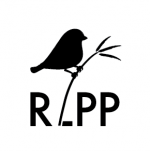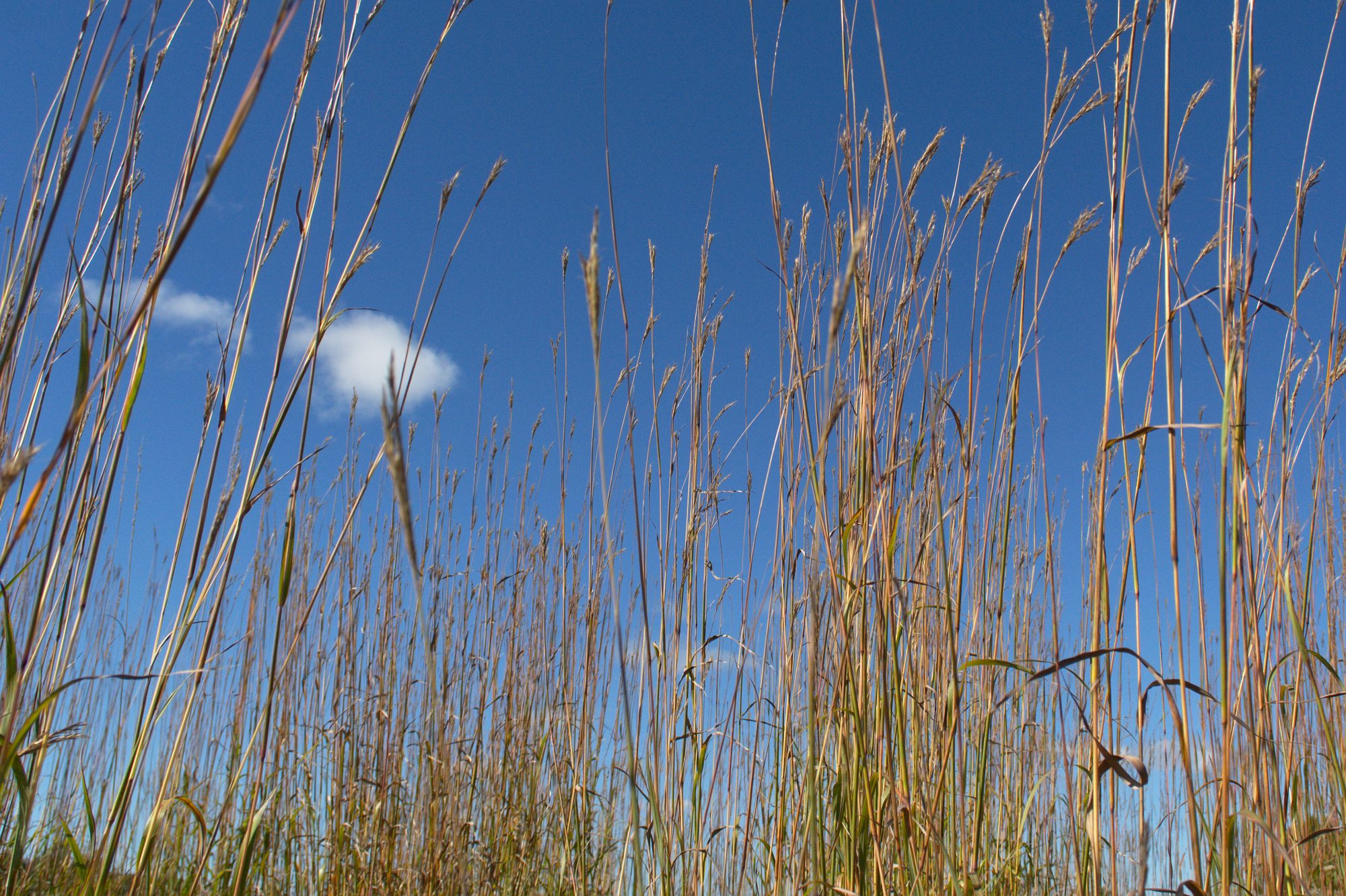What are Species at Risk?
A “species at risk” is any naturally-occurring plant or animal in danger of extinction or of disappearing from the area. Once they have been classified as “at risk”, they are added to the Species at Risk in Ontario (SARO) List. Learn more.
Why Some Species are at Risk
Through a long history of evolution, each species has become adapted to fit into a particular ecological niche. When a species becomes at risk of disappearing from Canada, there are many possible causes, including habitat loss and degradation, genetic and reproductive isolation, suppression of natural events, environmental contamination, over harvesting, climate change, disease and invasive species.
Reasons for species to be at risk can be as unique and complex as the individual species themselves. However, a large proportion of these factors have to do with human influence and interaction. This is why government intervention, through legislative mechanisms such as Species at Risk Act (SARA), is necessary to ensure that ecological integrity and biological diversity are protected for generations to come.
Eastern Hog-nosed Snake
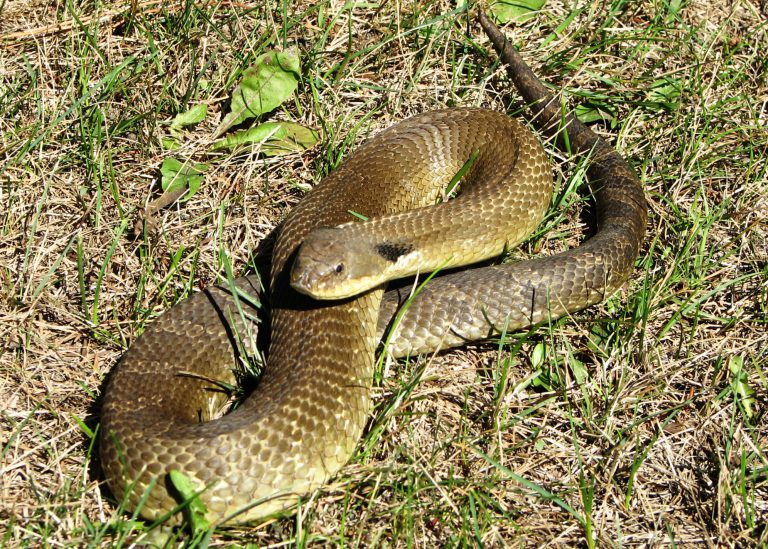
Scientific Name: Heterodon platirhinos
Description: Sometimes mistaken for a cobra because when it is threatened it rears back and flattens its neck out. It may strike out if harassed but rarely bites, and it is non-venomous. It gets its common name from long scales on its nose which give it an upturned snout. Old individuals can be one metre long and their bodies are thick.
Habitat: They prefer sandy, well-drained habitats such as beaches and dry woods because this is where they lay their eggs in burrows and where they hibernate. But they must have access to wet areas such as swamps to hunt frogs, toads and lizards.
Threats: The species is at the northern limits of its range in Ontario and was likely never common here. Historic declines were probably due to loss of habitat from development and farming, and persecution by people. These factors continue as threats today and slow the recovery of the species in Ontario.
Eastern Ribbonsnake
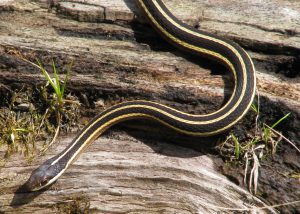
Scientific Name: Thamnophis sauritus
Description: A slim snake with three bright yellow, longitudinal stripes running down its sides, contrasting sharply with the dorsal background colour of chocolate brown or black. Adults can grow to about 70 cm long, and females typically grow larger than males. An adult female gives birth to 5-12 live young in late summer. The baby snakes are independent and begin hunting for insect prey almost immediately.
Habitat: Usually found close to water, especially in marshes where it hunts for frogs and small fish. At the onset of cold weather, individuals congregate in burrows or rock crevices to hibernate together in what is termed a “hibernaculum.”
Threats: At the northern limit for the species, they may never have been common or widespread in the RLP. It is likely that the reduction of wetland habitat through urban and agricultural development resulted in a decrease in abundance in Ontario.
Eastern Milksnake
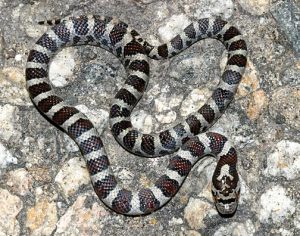
Scientific Name: Lampropelitis triangulum
Description: A beautifully marked snake that can grow to a length of one meter or more. Dorsal blotches are usually red with black borders, but coloration is quite variable and blotches may be brown or even green. It is the only snake in Ontario that is reddish. This species is not venomous and captures small mammals, especially mice, and subdues them by constriction. If surprised or threatened, it will take an aggressive posture by raising its head in the air, vibrating its tail and possibly attempting to bite. It has sometimes been mistaken for a rattlesnake, as the vibrating tail can make a buzzing sound in dry leaves.
Habitat: It lives in a wide range of habitats, especially old fields and farm buildings where rodents are common. It is more likely to be encountered at night when it is hunting as it usually remains hidden by day.
Threats: Historically, human persecution has been a threat. Because it is often around farm buildings, it does get killed by vehicles. Its aggressive behaviour and proclivity to inhabit buildings makes it more prone to being killed by humans.
Red-headed Woodpecker
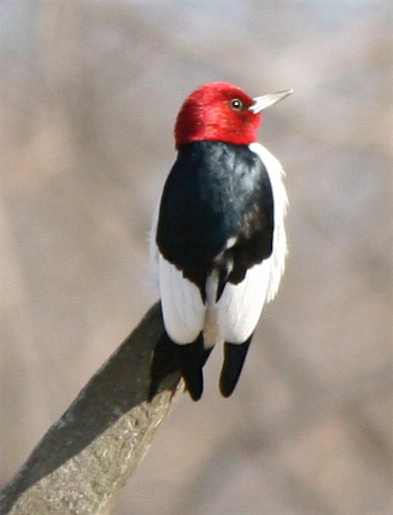
Scientific Name: Melanerpes erythrocephalus
Description: A vivid red head, neck and breast which makes it instantly recognizable. It is a medium-size bird (20cm). It is an omnivorous species, feeding on insects in the summer and nuts in the winter. Widespread but rare in Southern Ontario.
Habitat: Lives in open woodland and woodland edges, especially in oak savannas and riparian forest, which can often be found in parks, golf courses and cemeteries. These habitats contain a higher density of dead trees, which they commonly use for nesting and perching.
Threats: The population has declined significantly due to habitat loss which can be attributed to forestry and agricultural practices. Its loss is also due to competition for nest sites from the European Starling.
Common Nighthawk
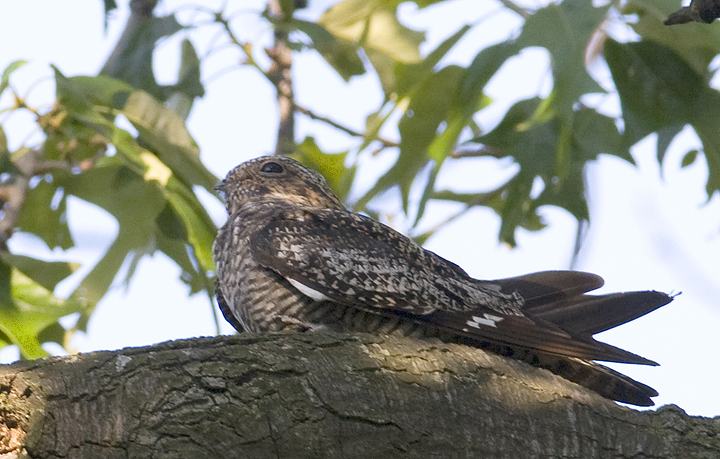
Scientific Name: Chordeiles minor
Description: A medium-sized bird, 21–25 centimetres long, with long, narrow, pointed wings and a long tail that is slightly notched. Its head and eyes are large for its size, its plumage is dark brown with black, white and buff specks, allowing it to blend in with roost sites which include gravel beaches and rocky outcrops or burned woodlands.
Habitat: Open areas with little or no ground vegetation such as forest clearings and burned-over areas. They winter in South America.
Threats: Large-scale use of insecticides may be partly responsible due to insects being their main food source. Other threats include habitat degradation resulting from fire suppression, land use changes and an increase in intensive agriculture.
Least Bittern
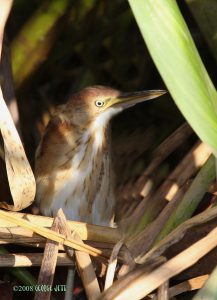
Scientific Name: lxobrychus exilis
Description: The smallest of the North American herons and is distinguished by large chestnut patches on its wings. Males are darker than females. However they are more likely to be heard than seen as it “coos” softly from deep in a cattail marsh. It is found mainly in large, quiet marshes close to the Great Lakes.
Habitat: It is found mainly in large, quiet marshes close to the Great Lakes.
Threats: The principal threat to the Least Bittern is the draining of wetlands for conversion to farmland and urban development. As marshes decrease in size and recreation and noise increase, the population declines in the area.
Monarch Butterfly
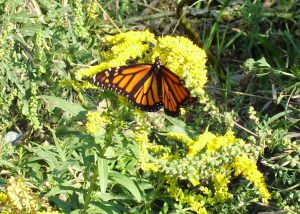
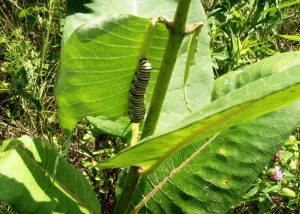
Scientific Name: Danaus plexippus
Description: Distinct orange butterfly, similar to Viceroy butterfly.
Habitat: Found in Ontario wherever there are milkweed plants for its caterpillars and wildflowers for a nectar source. Often on abandoned farmland and roadsides, but also in city gardens and parks. The eastern North American population migrates to Mexico each fall to overwinter at 12 sites in the central mountains. to find the sites, biologists from Toronto glued identification tags to the wings of thousands of Monarchs in the fall so that observers across Central and North America could document the migration pathway.
Threats: Declines in the Ontario populations of Monarchs are due to factors on the wintering grounds and in Ontario. The main causes of decline are logging and disturbance of the overwintering sites in Mexico, and the widespread use of pesticides and herbicides in Ontario.
Karner Blue

Scientific Name: Plebejus melissa samuelis
Description: A stunningly beautiful butterfly whose upper wing surfaces are the clearest azure blue. Females are a darker, greyish blue. Unfortunately, this butterfly can no longer be found in its former black oak savanna habitat in Ontario, and it is considered extirpated here (i.e., regionally extinct, but continuing to exist elsewhere). Female Karner Blues lay their eggs on or near Wild Lupine (Lupinus perennis) which serves as the food plant of the butterfly larvae. Ants tend the larvae, protecting them from predators such as spiders.
Habitat: Female Karner Blues lay their eggs on or near Wild Lupine (Lupinus perennis) which serves as the food plant of the butterfly larvae. They flourish after fires and other forms of disturbance.
Threats: Habitat loss is responsible for the decline of the Karner Blue throughout its range. The disappearance of habitat in Ontario can be attributed to plant succession which creates shady conditions unsuitable for the growth of Wild Lupine.
Butternut
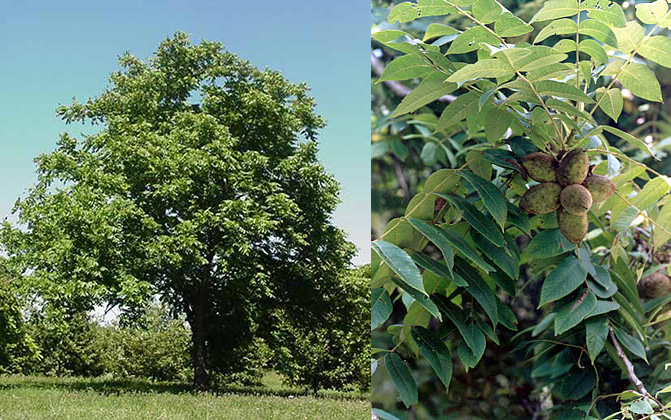
Scientific Name: Juglans cinerea
Description: A medium-sized tree that belongs to the Walnut family, and like the other native walnut in Ontario, the Black Walnut, it produces edible nuts in the fall. The roots of Butternut secrete juglone, an allopathic chemical that can kill other plants growing nearby.
Habitat: Butternut trees are normally found scattered at low density in forests, and were thus never common in Ontario.
Threat: Today, the main threat to Butternut is a serious fungal disease called Butternut Canker, which was first found in Ontario trees in 1991, but has been in North America for about 50 years. The fungus can kill a tree within a few years of infection. It enters through cracks or wounds in the bark and multiplies rapidly, making sunken cankers that expand and girdle the branch or trunk, killing everything above the canker. In Ontario, surveys in eastern Ontario show that most trees are infected, and perhaps one-third have been killed.
Cylindrical Blazing Star
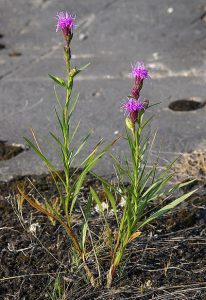
Scientific Name: Liatris cylindracea
Description: This native perennial is also known as slender blazing star, Ontario blazing star, barrelhead gayfeather and few-headed blazing-star. It is a member of the Aster family. The flowers are purple to pink on a short spike at the top of the stem. Each compound flower consists of about 15-25 tubular flowers that are crowded together into a head that is about 2-3 cm across; each flower has 5 small lobes that curl outward. It has no floral scent. Flowers between July – September. It has basal leaves in a rosette and the leaf can be up to 40cm long, becoming smaller and fewer towards the top of the stem. Its height can be as much as 1m but is generally shorter.
Habitat: Dry woodlands, prairies, fields and meadows.
Threat: Habitat loss, the use of pesticides and increased agriculture are responsible for the rarity of this plant.
Grooved Yellow Flax
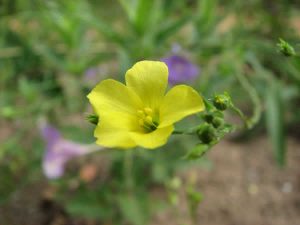
Scientific Name: Linum sulcatum
Description: Grooved yellow flax is an erect annual herb that grows up to 2½ feet (75 cm) tall. The common name refers to its grooved stems which are purplish near the base. The leaves grow alternately along the stem. They are linear to oblong, have smooth margins, and attach directly to the stem without a petiole. There are two distinctive blackish glands on the stem near the base of each leaf. The flowers are yellow, have 5 smooth petals, and are roughly ½ inch (12 cm) wide. They are held in loose clusters near the top of the stem and bloom from May to September.
Habitat: Grooved Yellow Flax can be found growing in scattered sites on sandy barrens.
Threats: It has been assigned a rarity status of Endangered. Grooved yellow flax populations are threatened by habitat loss and succession. Over time, the open nature of the habitats required by this species may be lost due to encroachment by woody and invasive species. Other potential hazards include trampling, incompatible land management, and habitat fragmentation, which limits seed dispersal.
Resources
COSEWIC – Committee on the Status of Endangered Wildlife in Canada
COSSARO – Committee on the Status of Species at Risk in Ontario
SARO – Species at Risk in Ontario
Species at Risk Within the Rice Lake Plains (PDF)
